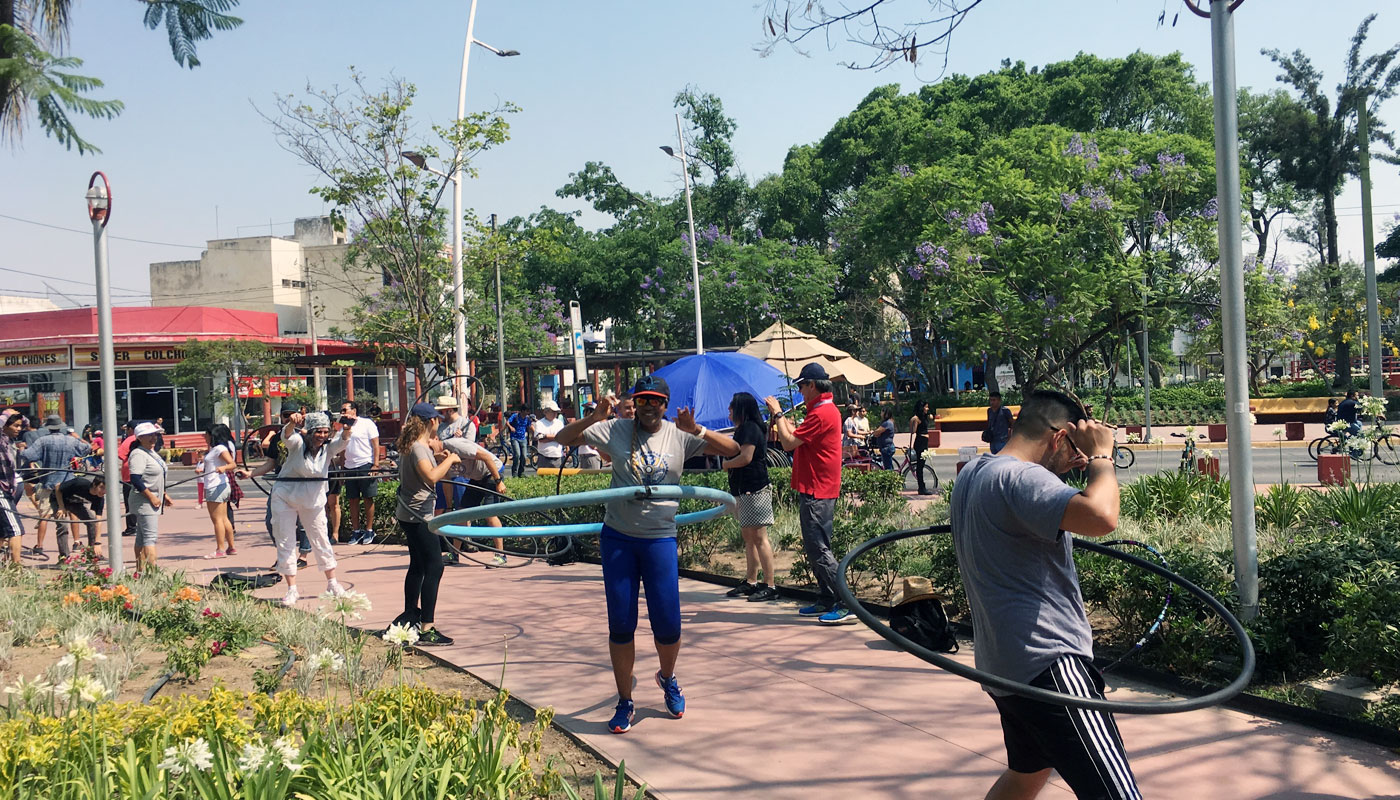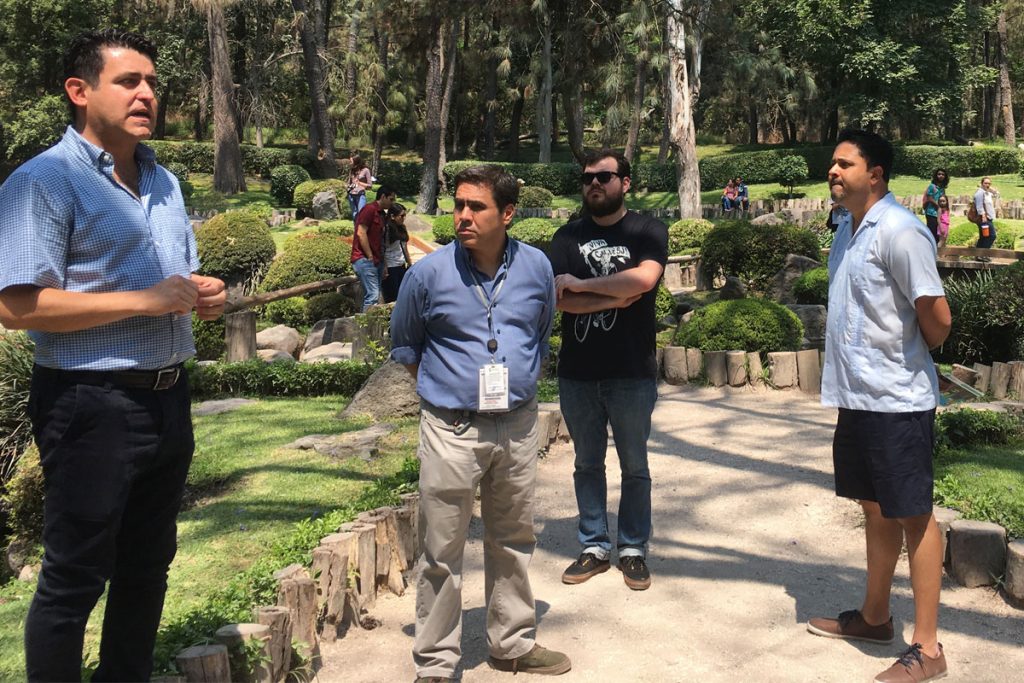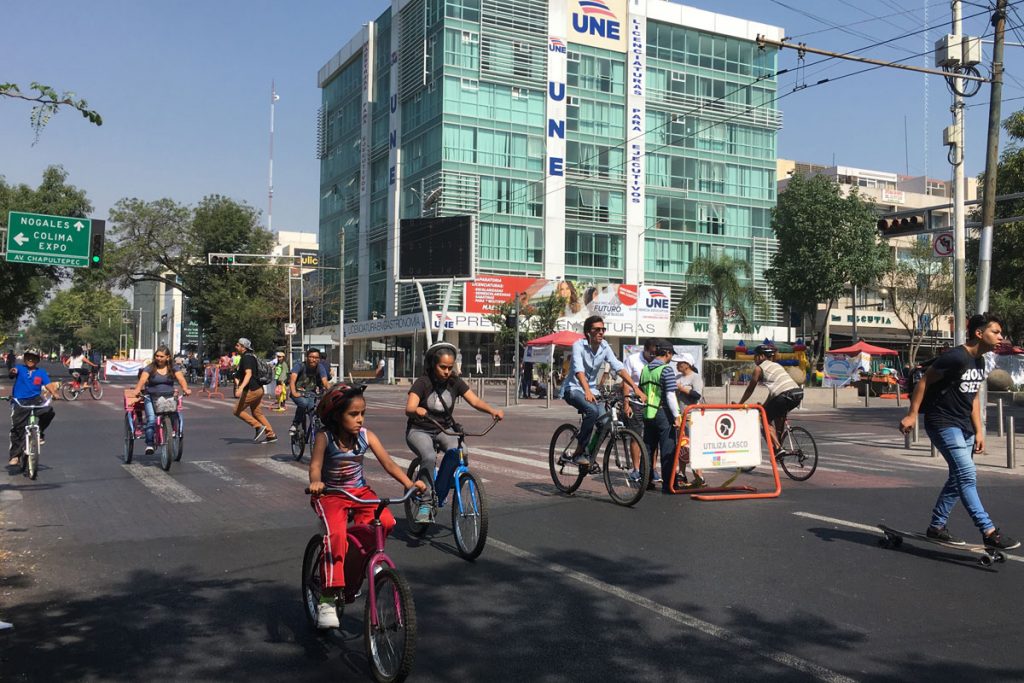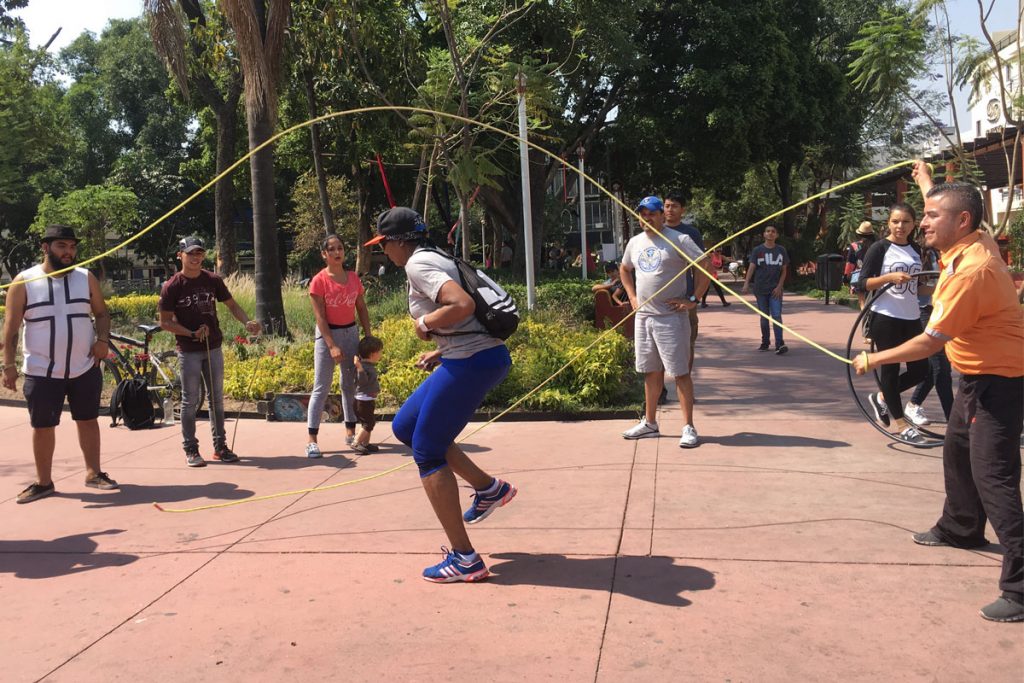
24 May Vision and Tonic-Lessons from Guadalajara 2020
From May 5-7, 8 80 Cities and the Knight Foundation led a group of City Councillors, City Staff, business owners, and other community leaders from San Jose on a study tour to Guadalajara. Guadalajara is home to 2 million residents in the state of Jalisco, Mexico. Over the last 17 years, through several different administrations spanning multiple political parties, Guadalajara has seen a rejuvenation of its public life and public spaces. The catalyst? A bold unified vision: Guadalajara 2020.
 Launched by prominent members of the business community, Guadalajara 2020 is a civil association of community leaders who want to see their city become the leading hub of Latin America by improving mobility, creating sustainability, and recovering public spaces for sport, culture, and art. Over the course of three days, we witnessed first hand the transformational power committed leadership with a bold vision can have.
Launched by prominent members of the business community, Guadalajara 2020 is a civil association of community leaders who want to see their city become the leading hub of Latin America by improving mobility, creating sustainability, and recovering public spaces for sport, culture, and art. Over the course of three days, we witnessed first hand the transformational power committed leadership with a bold vision can have.
This power was evident the first day of our study tour, as we visited several city parks with the operations teams responsible for their maintenance and programming. The parks themselves were
magnificent, with play structures for all ages, running tracks, exercise equipment, and varied seating options. Music, vitality, and vibrancy abounded. Parks Staff from San Jose immediately began discussing how to bring the same energy to their own spaces. But what really struck me was the passion and care each city staff member had for their park. Civil servants empowered to take charge of public space and create community hubs? How did this happen?
The next day, we met the business leaders responsible for Guadalajara 2020, and by extension, the conditions necessarily for the public life we’d witnessed the day before. They spoke of their vision for a sustainable, dynamic, people-friendly city. We heard of two decades of advocacy as they fought for a fairer city, prodding, and supporting local and state governments of various stripes into making investments in parks, plazas, cycling infrastructure, and green technology. It was this constant support from local community leaders that enabled a civic culture of pride and ownership amongst city staff. This is where excellent management of public spaces comes from governments and communities together deciding to value public life.
Our last day of the study tour saw us riding the Via Recreactiva, Guadalajara’s open streets program. Perhaps Guadalajara 2020’s most visible achievement, the Via is one of the most successful open streets programs in the world, with 400,000 residents enjoying 64 kilometres (40 miles) of streets opened to people for recreation and closed to cars every Sunday of the year.


We were accompanied on our 4.5 hour bike ride by the head organizer of the entire program, and once again, the love and commitment for the work were apparent. Afterwards, I listened to the buzz of conversation amongst the visitors from San Jose. What steps would be required to expand San Jose’s own open streets program? How can high school students in the U.S. be engaged in civic life the way teens in the Via Recreactiva were? Can we work with our solid waste department to pilot out a unique method of removing waste from parks as seen in Guadalajara?
Armed with new ideas and new approaches, our study tour participants developed concrete actions plans, as elected officials, civil servants, business owners and community leaders forged new relationships and set in motion ambitious new plans for San Jose. It was amazing to witness, and I left Guadalajara feeling inspired.
The lessons we learned over three days can be readily applied to any city. If we want to achieve transformation, we need do three things:
1. Develop a bold vision with core values
2. Enable passion and good management
3. Keep the pressure on and don’t rest on your laurels
The leaders of Guadalajara 2020 envisioned a powerhouse Latin American city, based on sustainability, active transportation, and public life. They helped foster conditions necessary for political leaders and city staff to take charge with energy and excitement, leading to the engaged management necessary for dynamic public life. They maintained those conditions through constant advocacy, building grassroots support, ensuring that changes in government did not lead to the abandonment of city building principles.
Perhaps grand visions are harder to come by these days. That doesn’t mean transformational change is impossible. If changes in our politics have made political leadership harder, changes in technology and social media have made engaging with our political leaders, and our communities easier. I don’t believe politicians today are any less visionary than ones in generations past. Maybe the tools of transformation have just changed, and they can no longer do it alone. Seeing a diverse group of leaders from San Jose work together with elected officials to achieve common goals was inspiring. We all saw so clearly how Guadalajara serves as an example of business leaders, community groups, and government working together to make foundational changes.



